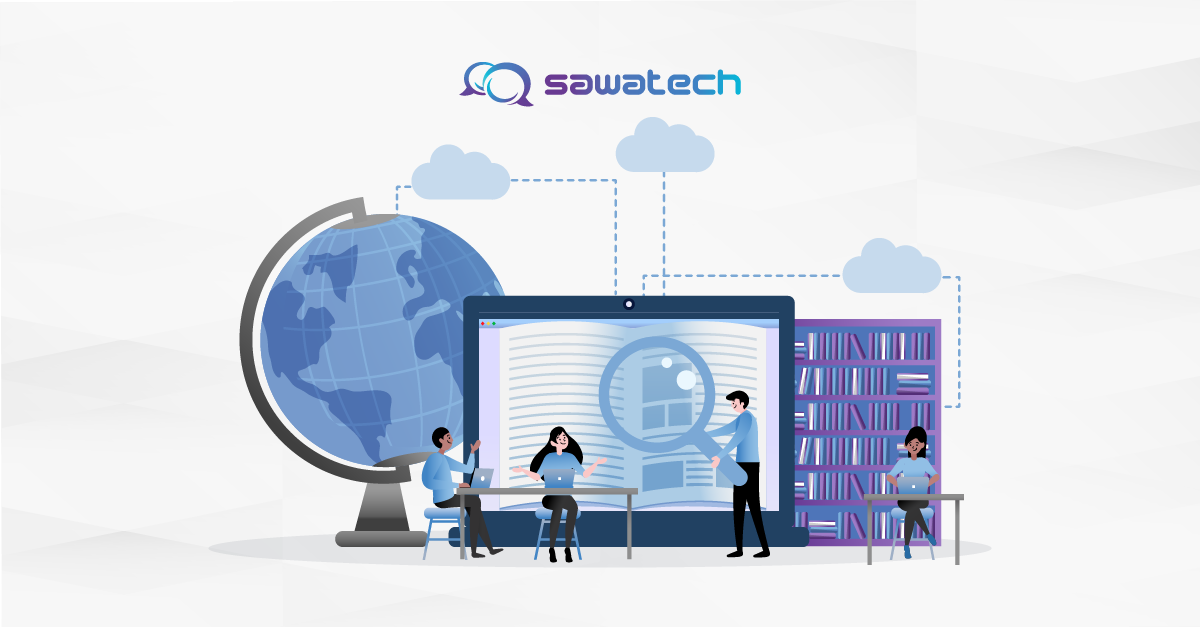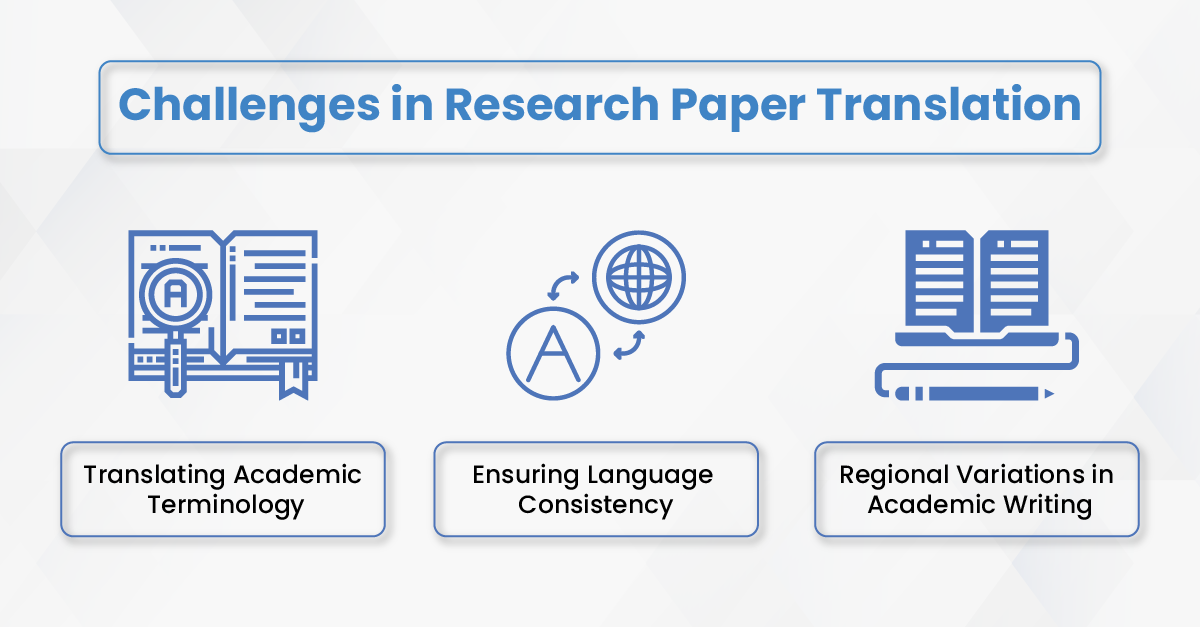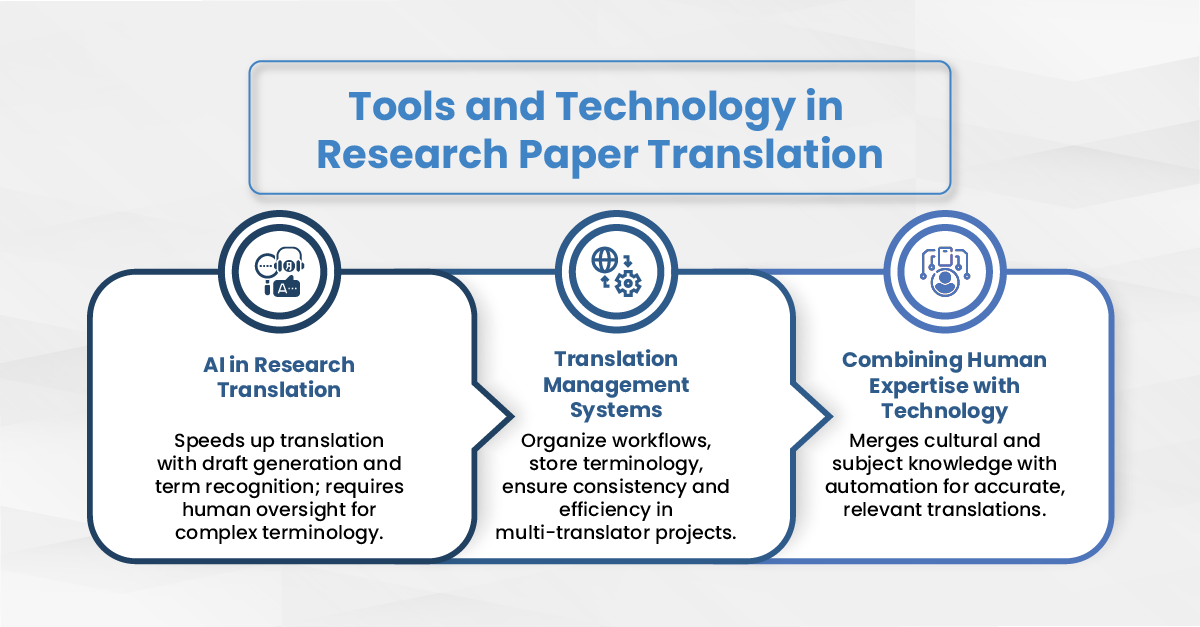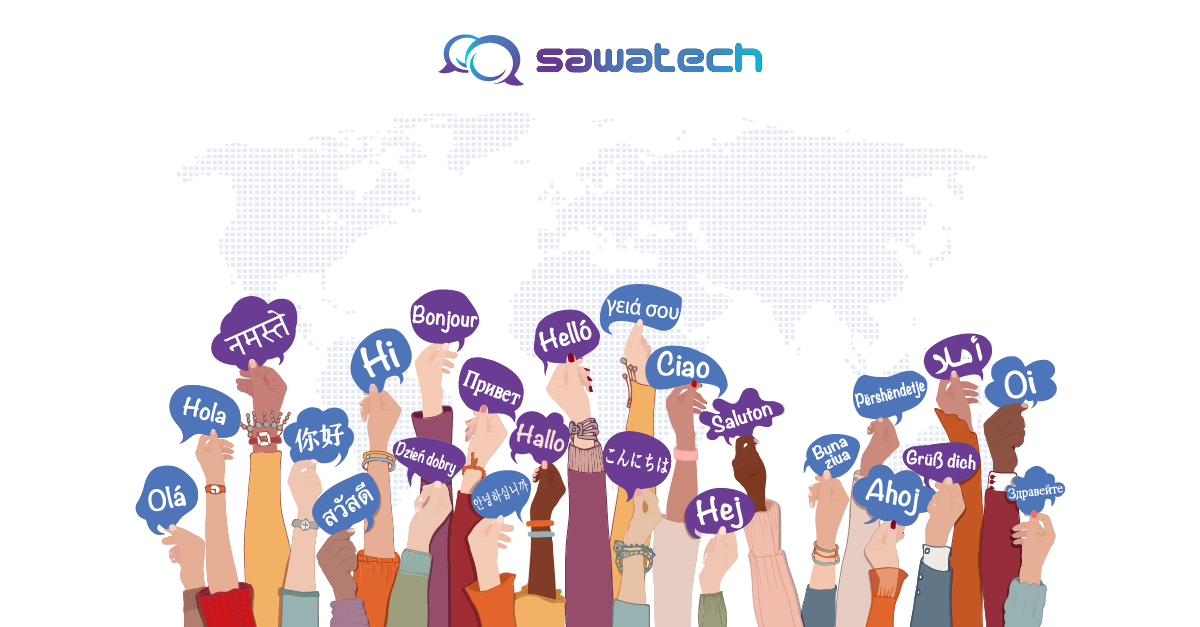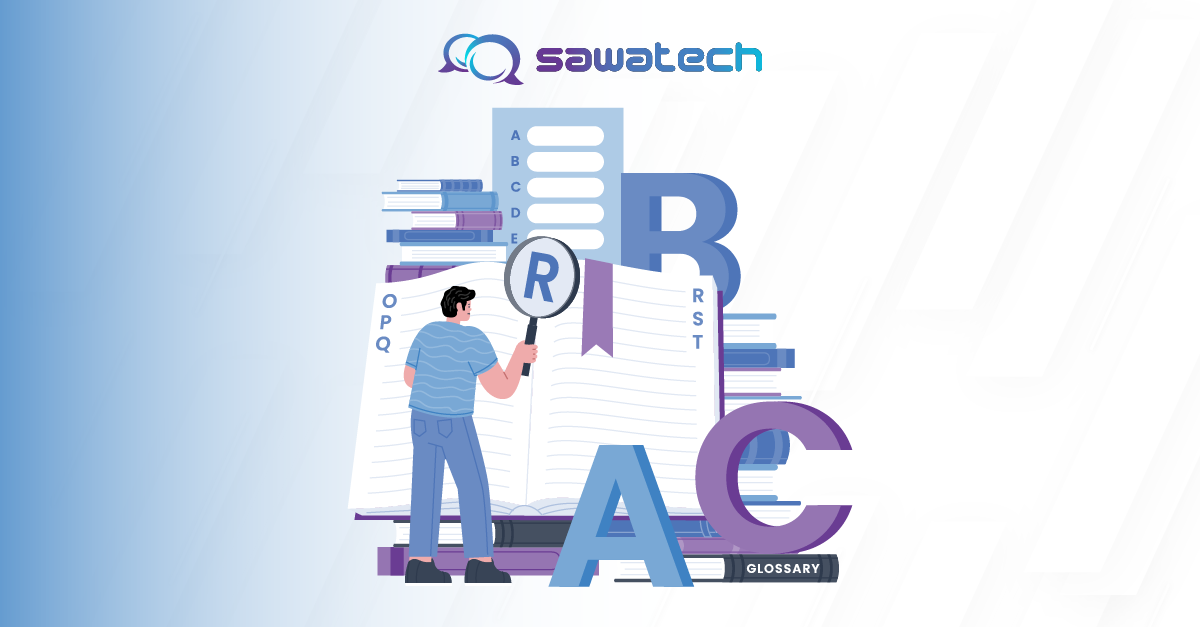Research paper translation is the process of converting academic work from one language to another while preserving its meaning, tone, and intent. It breaks language barriers in academia, allowing researchers to share findings with global audiences and fostering collaboration across countries.
This process is complex, requiring accuracy in technical terminology and sensitivity to cultural nuances. Skilled translators ensure that research is both precise and culturally appropriate, so it can be understood and valued worldwide.
Challenges in Research Paper Translation
1. Translating Academic Terminology
Academic terminology can be difficult to translate because many terms have no direct equivalent in other languages or may carry different meanings in different contexts. For example, terms like “myocardial infarction” in medicine or “force majeure” in law require precision to avoid altering the intended meaning.
To handle these challenges, translators need subject-matter expertise in the field they are working on. This ensures they understand both the technical language and the underlying concepts, allowing them to choose the most accurate and context-appropriate translations.
2. Language Consistency
Maintaining language consistency in research papers is important for clarity and credibility. If key terms are translated differently in various parts of the paper, it can confuse readers and weaken the document’s reliability.
Glossaries and style guides help address this issue by setting clear rules for terminology, tone, and formatting. These tools ensure that language remains uniform throughout the paper, making it easier for readers to follow and understand.
3. Regional Variations in Academic Writing
Academic writing styles can differ widely between regions, from tone and structure to preferred citation formats. For instance, US research papers may favor concise, direct language, while European styles may be more formal and detailed.
A skilled translator adapts not just the language but also the formatting and style to meet the expectations of the target audience. This cultural adaptation ensures the paper is accepted and understood in its intended academic community.
Learn how our Technical Translation Services ensure accuracy and cultural relevance.
How to Handle Research Paper Translation Effectively
1. Preparation and Content Analysis
- Review the Content Thoroughly – Read the entire paper to understand its purpose, structure, and complexity.
- Identify Technical Terminology – List all discipline-specific terms and concepts that need accurate, consistent translation.
- Define the Target Audience – Determine whether the paper is intended for academics, practitioners, or a general audience.
- Select Qualified Translators – Choose professionals with expertise in both translation and the paper’s subject area.
2. Translation and Localization
- Translate for Accuracy – Convert the text while preserving meaning, tone, and style.
- Adapt for Cultural Relevance – Localize references, examples, and idioms to resonate with the target audience.
- Adjust Formatting and Style – Modify layouts, headings, and citations to match regional academic standards.
- Maintain Reader Engagement – Ensure the language is clear, concise, and suitable for the intended readership.
3. Quality Assurance and Review
- Proofread for Accuracy – Check for grammatical, spelling, and terminology errors.
- Conduct a Technical Review – Verify that all technical and discipline-specific terms are correct.
- Use Translation Management Systems (TMS) – Employ TMS tools to ensure consistency and streamline quality checks.
- Perform a Final Review – Have a subject-matter expert review the translation before submission or publication.
Tools and Technology in Research Paper Translation
AI in Research Translation
AI-powered translation tools help speed up the research paper translation process by quickly generating draft translations and identifying repeated terms. They are especially useful for handling large volumes of text under tight deadlines.
However, AI struggles with complex academic terminology and nuanced language. Without human oversight, it can misinterpret technical terms or cultural references, leading to errors in meaning and accuracy.
Translation Management Systems
Translation Management Systems (TMS) make the translation process more organized and efficient. They store terminology, manage workflows, and ensure that all team members follow the same standards.
For research papers, TMS tools help maintain consistent terminology and formatting across the entire document. This improves both accuracy and efficiency, especially in multi-translator projects.
Combining Human Expertise with Technology
The best results come from combining human expertise with modern translation tools. Human translators bring subject knowledge, cultural understanding, and the ability to interpret complex ideas accurately.
Technology supports this by automating repetitive tasks, checking for consistency, and speeding up workflows. Together, they produce translations that are both precise and culturally relevant.
Explore how our Electronics Translation Services combine human expertise and cutting-edge tools.
Applications of Research Paper Translation
Medical Research Translation
Medical research translation involves converting studies, clinical trial results, and medical reports into different languages for global accessibility. This ensures that findings can be shared with healthcare professionals, researchers, and policymakers worldwide.
Precision is critical in medical terminology, as even minor errors can lead to serious misunderstandings. Translators must have both linguistic skills and medical expertise to ensure accuracy and clarity in every detail.
Legal Research Translation
Legal research translation covers documents such as case studies, policy analyses, and comparative law papers. Accurate translation allows legal professionals and scholars from different regions to access and reference each other’s work.
The challenge lies in translating culturally specific legal concepts and terms that may not have direct equivalents. Skilled legal translators adapt content to preserve meaning while respecting jurisdiction-specific nuances.
Scientific and Engineering Research Translation
Scientific and engineering research translation helps share innovations across borders, enabling collaboration between global experts. It includes translating patents, technical manuals, and complex engineering studies.
These translations require a deep understanding of technical language and precise measurements. Accuracy is essential to ensure designs, formulas, and processes are correctly understood and applied.
Ensure accuracy in complex fields with our Hardware Translation Services.
Ensuring Accuracy and Quality in Research Paper Translation
1. Collaborate with Subject-Matter Experts
Working with translators who are subject-matter experts ensures the correct use of specialized terminology. For example, a medical research paper should be handled by a translator with medical knowledge to guarantee accuracy in clinical terms and data interpretation.
These experts not only understand the technical language but also the concepts behind it. This helps avoid errors that could change the meaning of the research, ensuring the translation remains reliable and credible.
2. Adapt to the Target Audience
Research papers should be tailored to the expectations of their intended audience. This means adjusting tone, style, and terminology to match the knowledge level and preferences of the readers.
Localization is also key in adapting examples, cultural references, and formats so that the content feels relevant and accessible to the target region’s academic community.
3. Use Glossaries and Style Guides
Glossaries help maintain consistent terminology throughout a research paper, which is essential for clarity and professionalism. They ensure that key terms are translated the same way in every section.
Style guides provide rules for tone, formatting, and citation style. By following them, translators keep the paper uniform, polished, and aligned with academic standards.
Partner with Us for Accurate Research Paper Translations
Ready to share your research with the world? Our expert translators ensure your work is accurately translated and culturally adapted, making it accessible to global audiences. Every project is handled with precision to preserve the integrity of your research.
We specialize in academic, medical, legal, and technical research translations, combining subject-matter expertise with advanced tools for the best results. Contact us today for a free consultation and start reaching readers worldwide.
FREQUENTLY ASKED QUESTIONS
- How does AI translation work for research papers?
AI translation uses algorithms to quickly process and translate text. Human review then ensures the translation is accurate and contextually correct. - Can AI accurately translate complex academic terminology?
AI can assist with terminology, but human expertise is needed to handle specialized terms with precision and clarity. - Does the system handle multiple languages within a single paper?
Yes, many tools can process multiple languages in one document. Human oversight ensures consistency across all sections. - Do I need an R Discovery subscription to translate papers?
No, our translation services are independent and customized to your specific research needs. - What makes R Discovery’s translation different from other tools?
It combines skilled human translators with advanced technology, ensuring both accuracy and cultural relevance.

